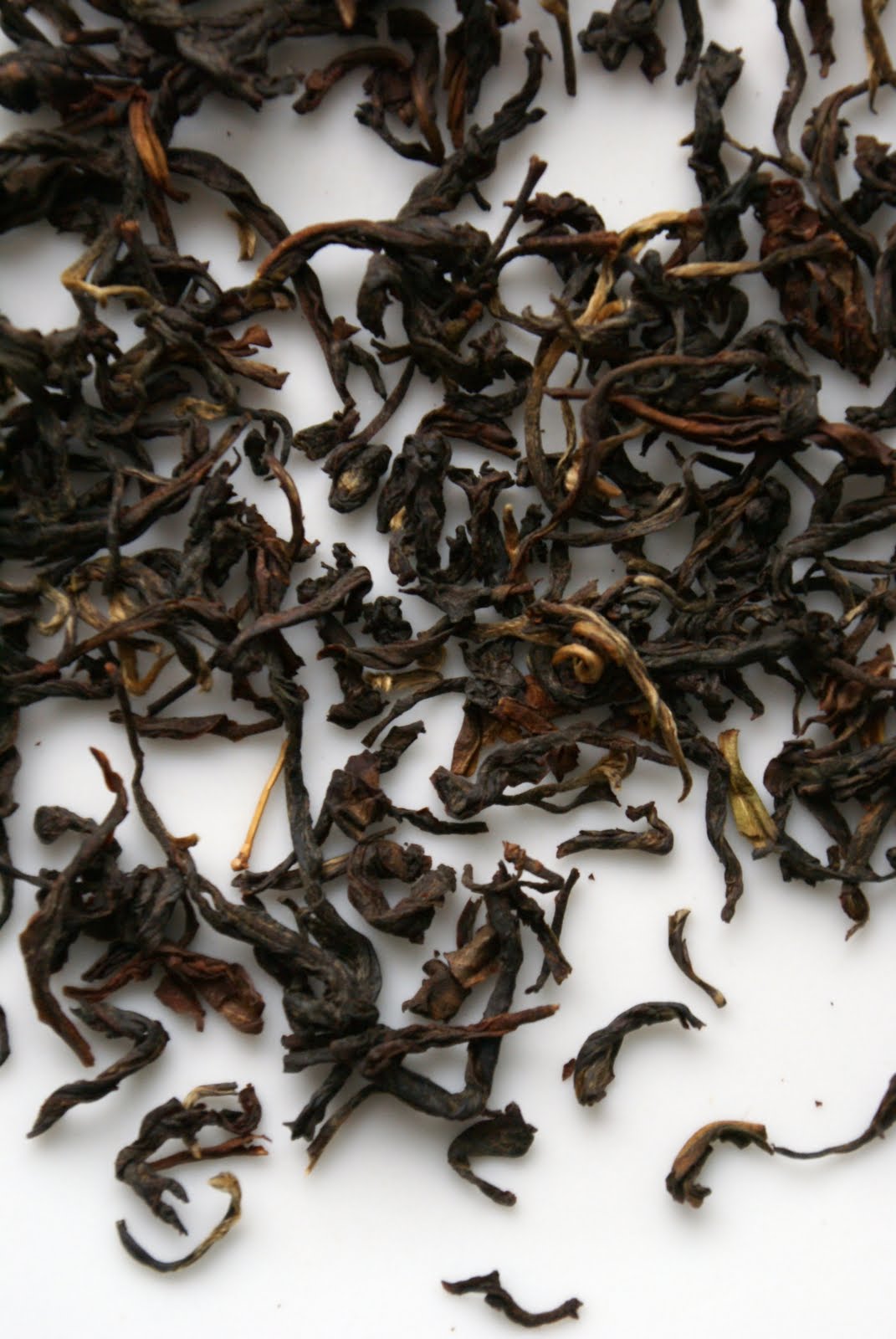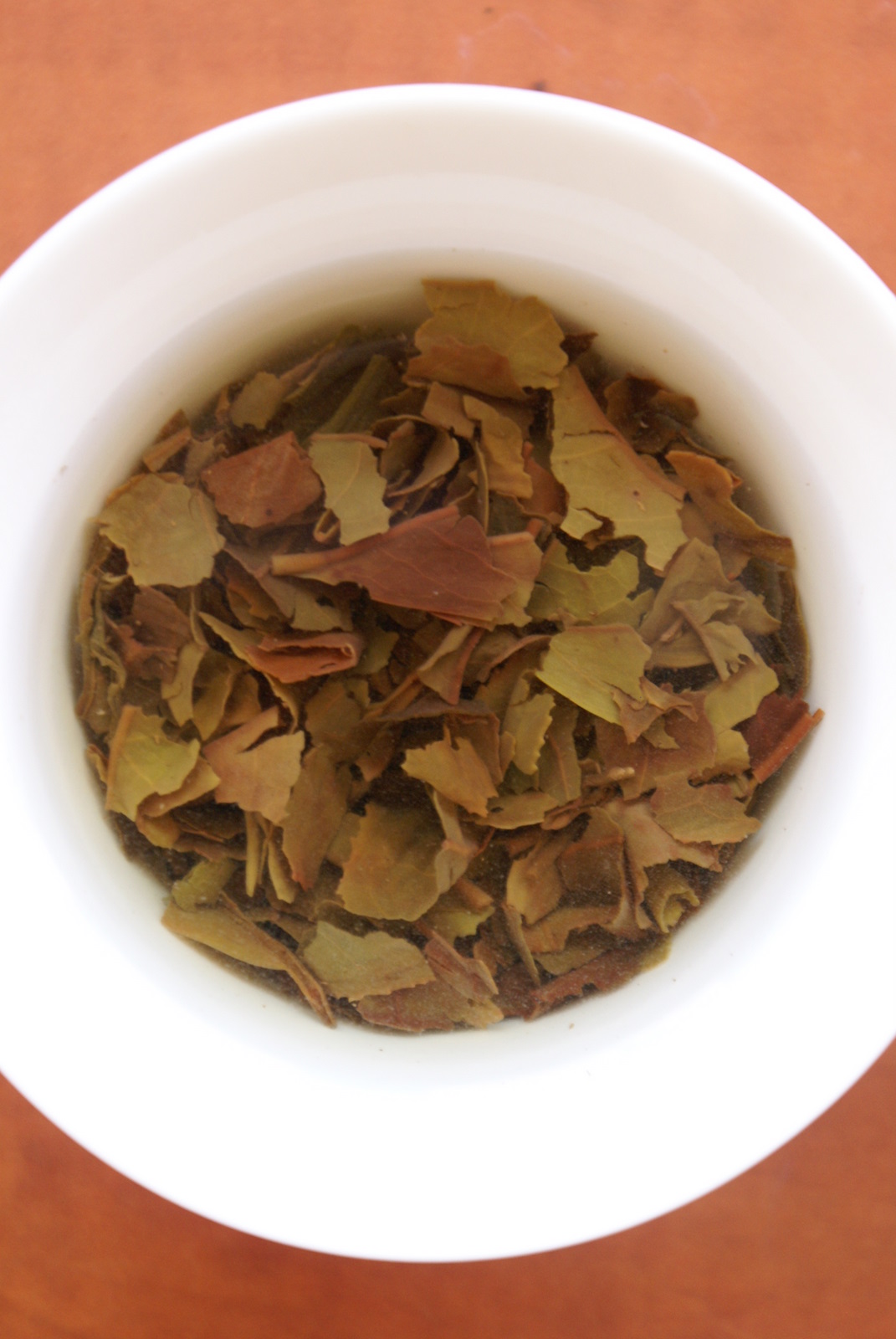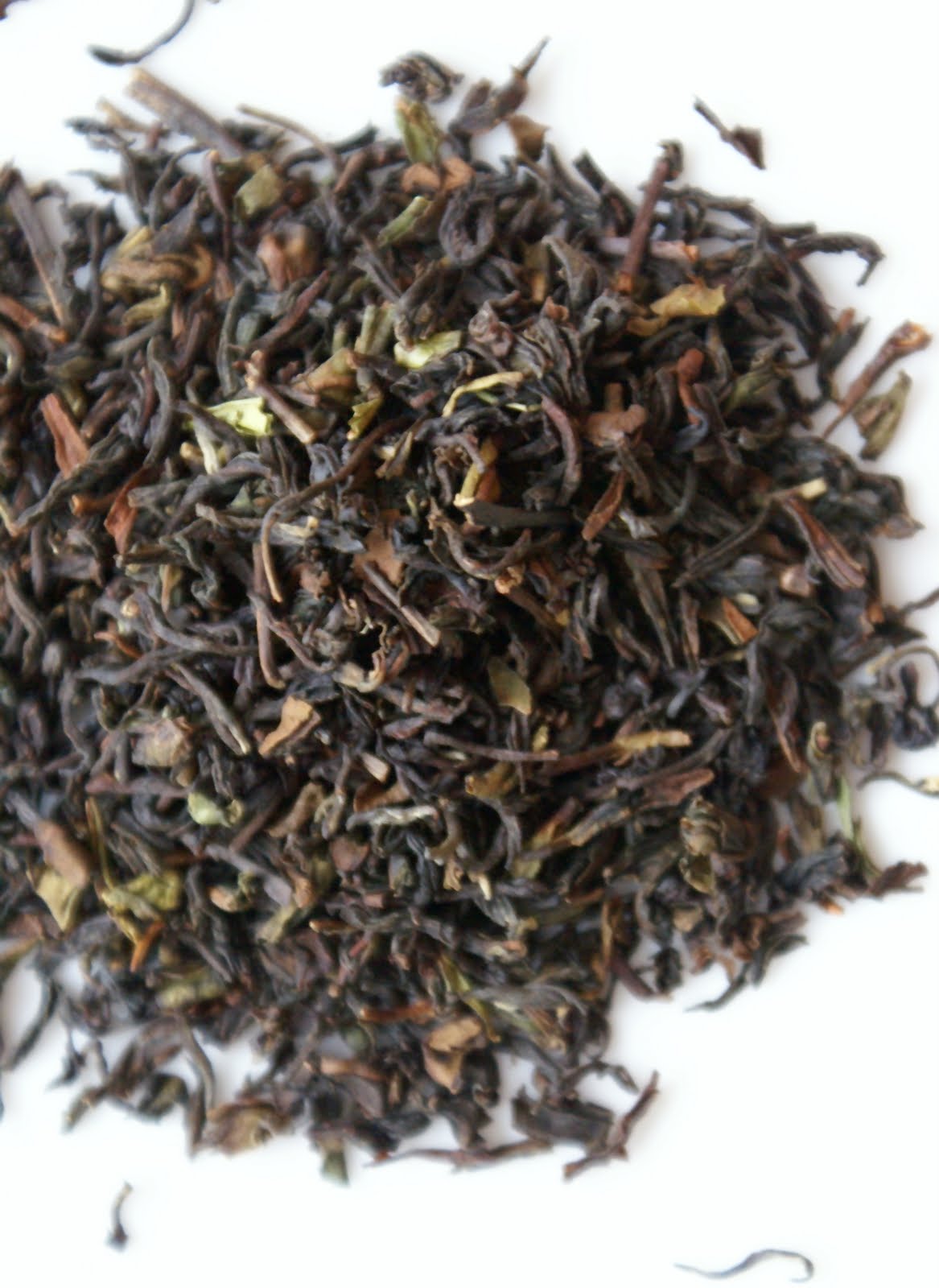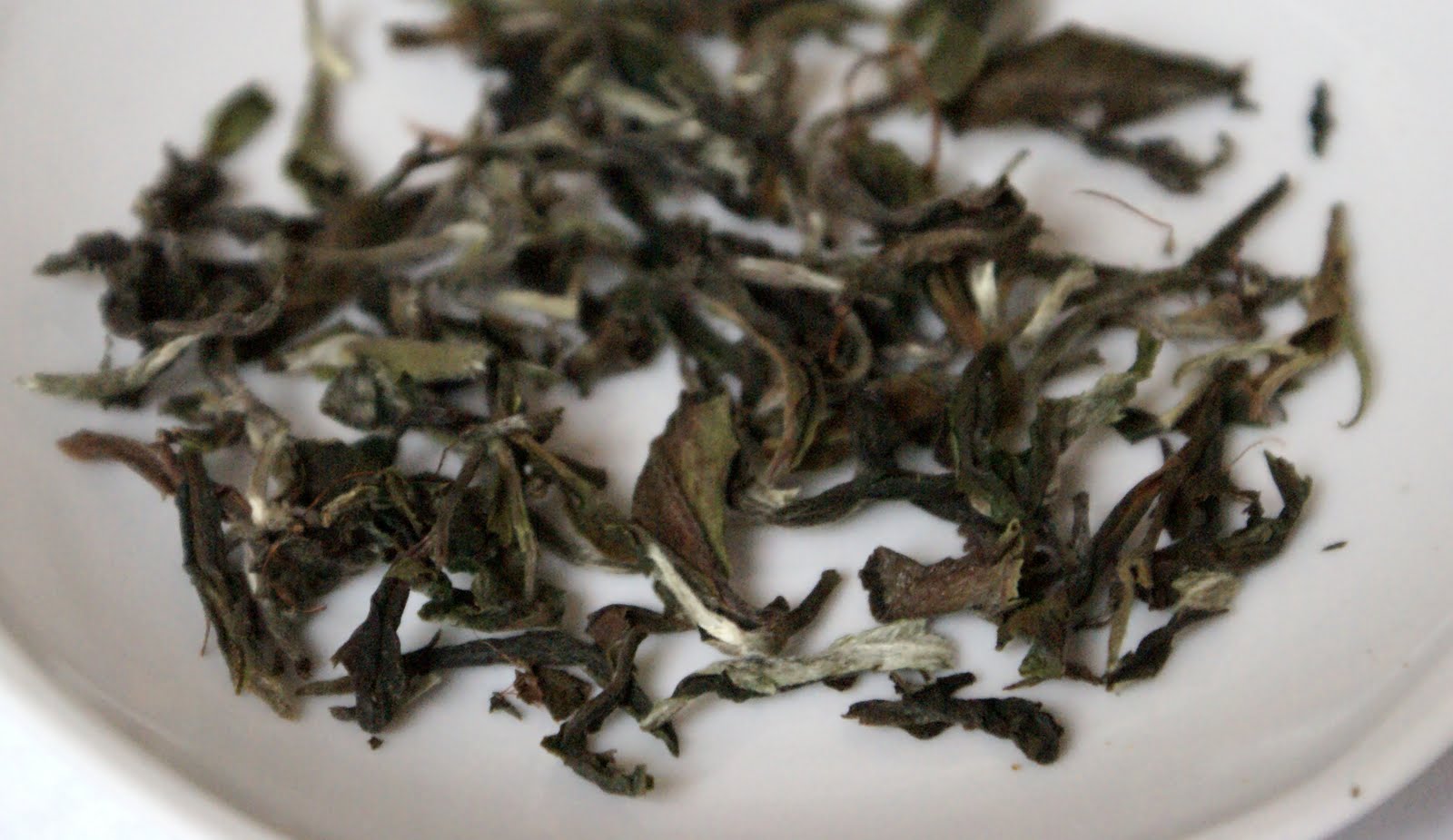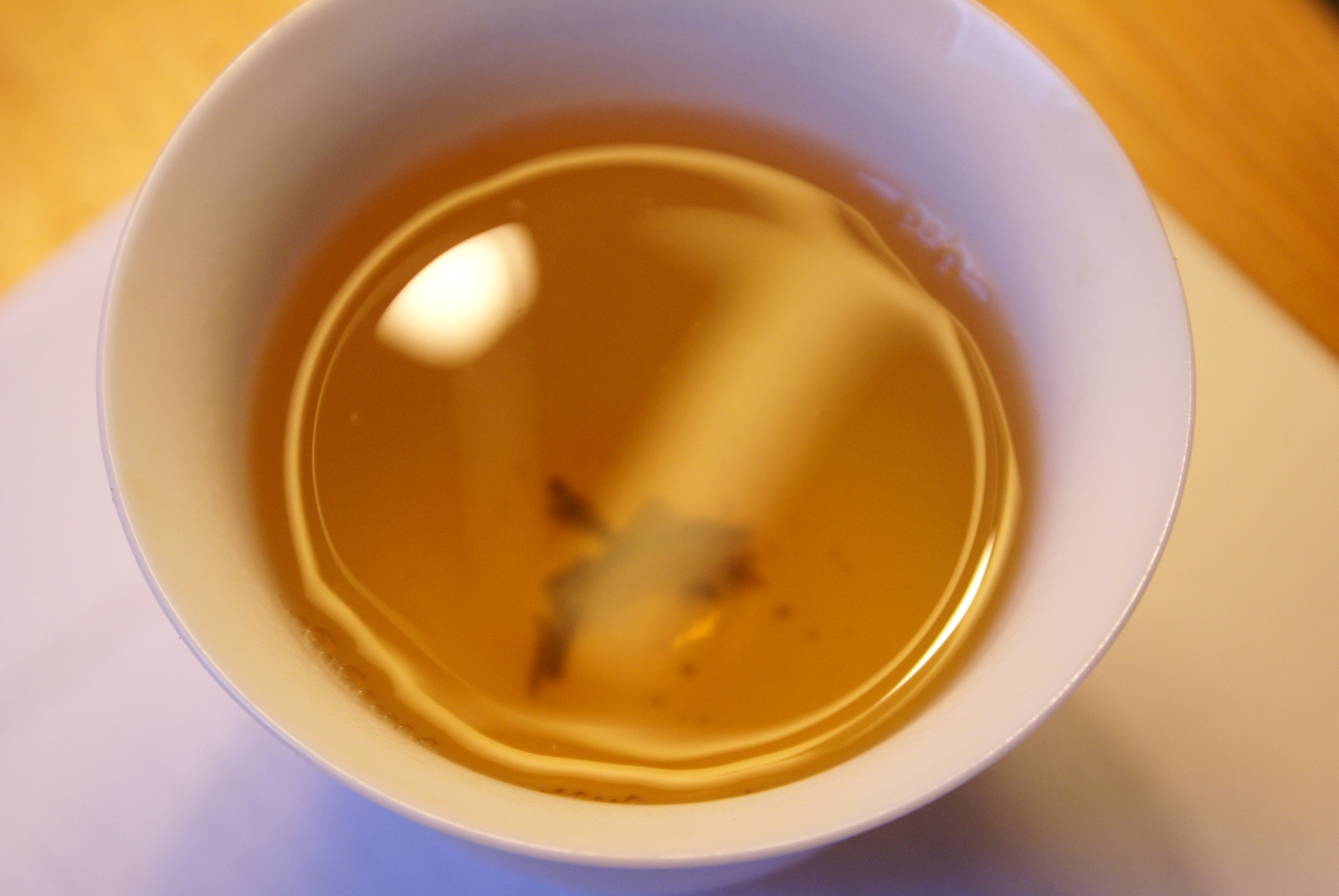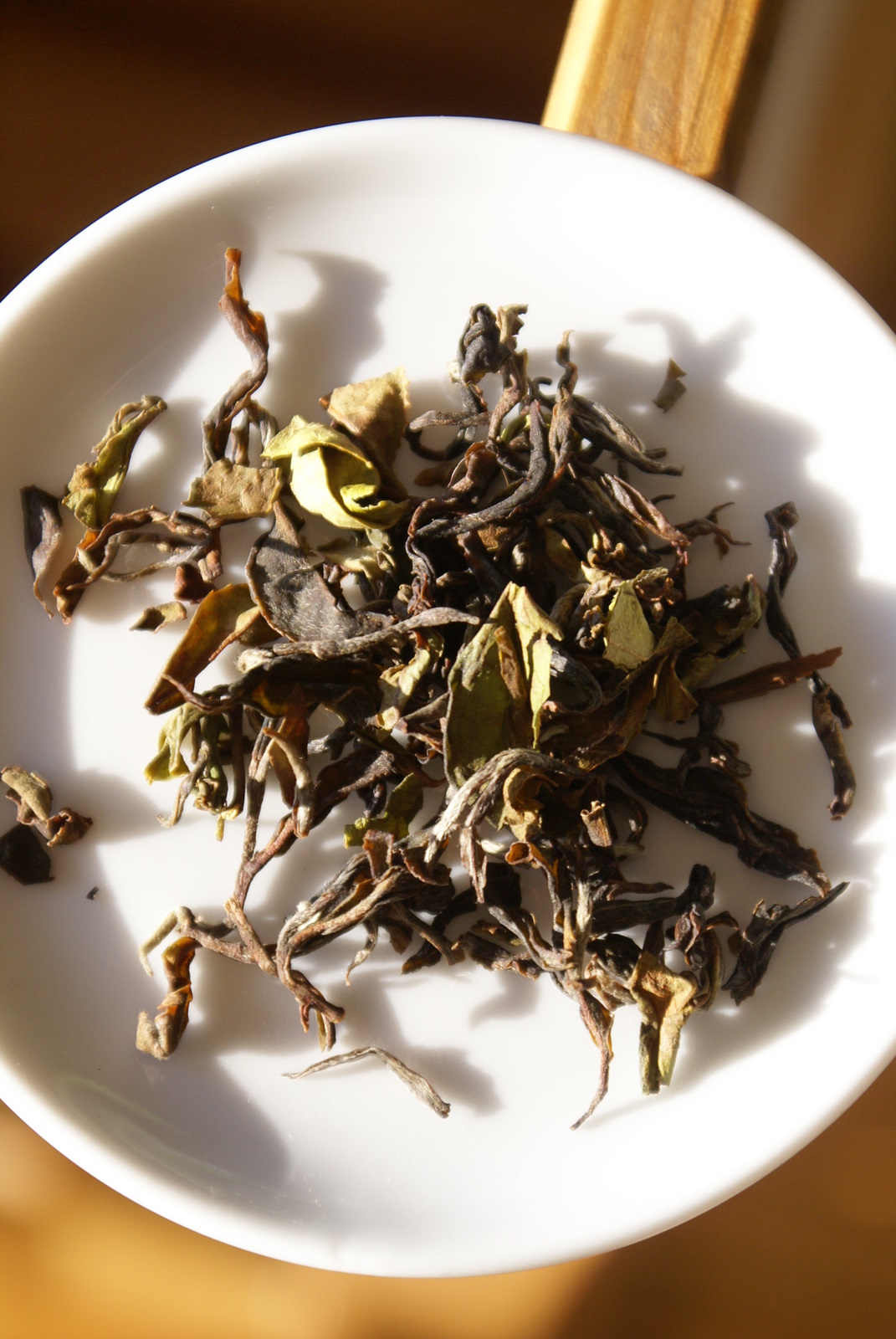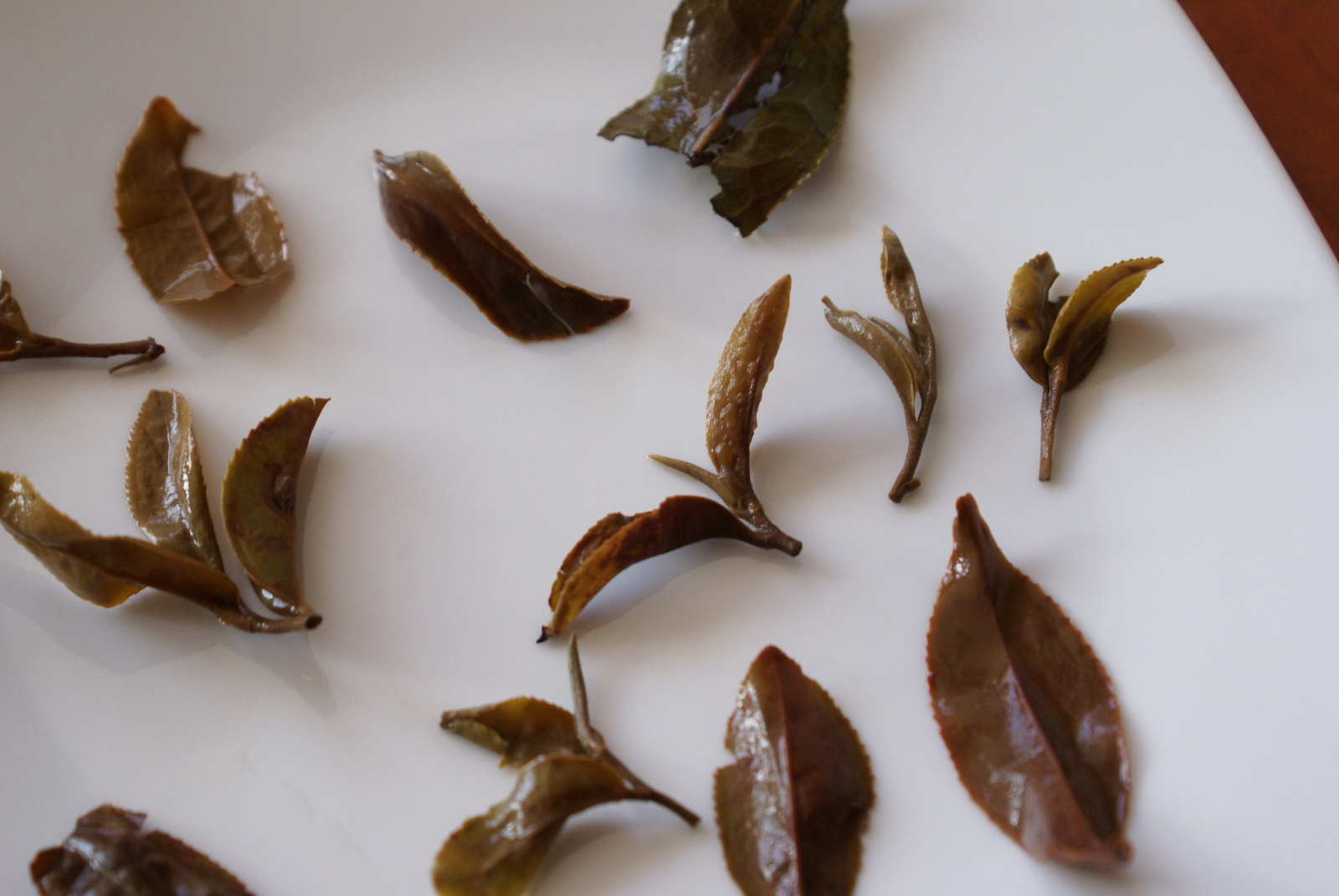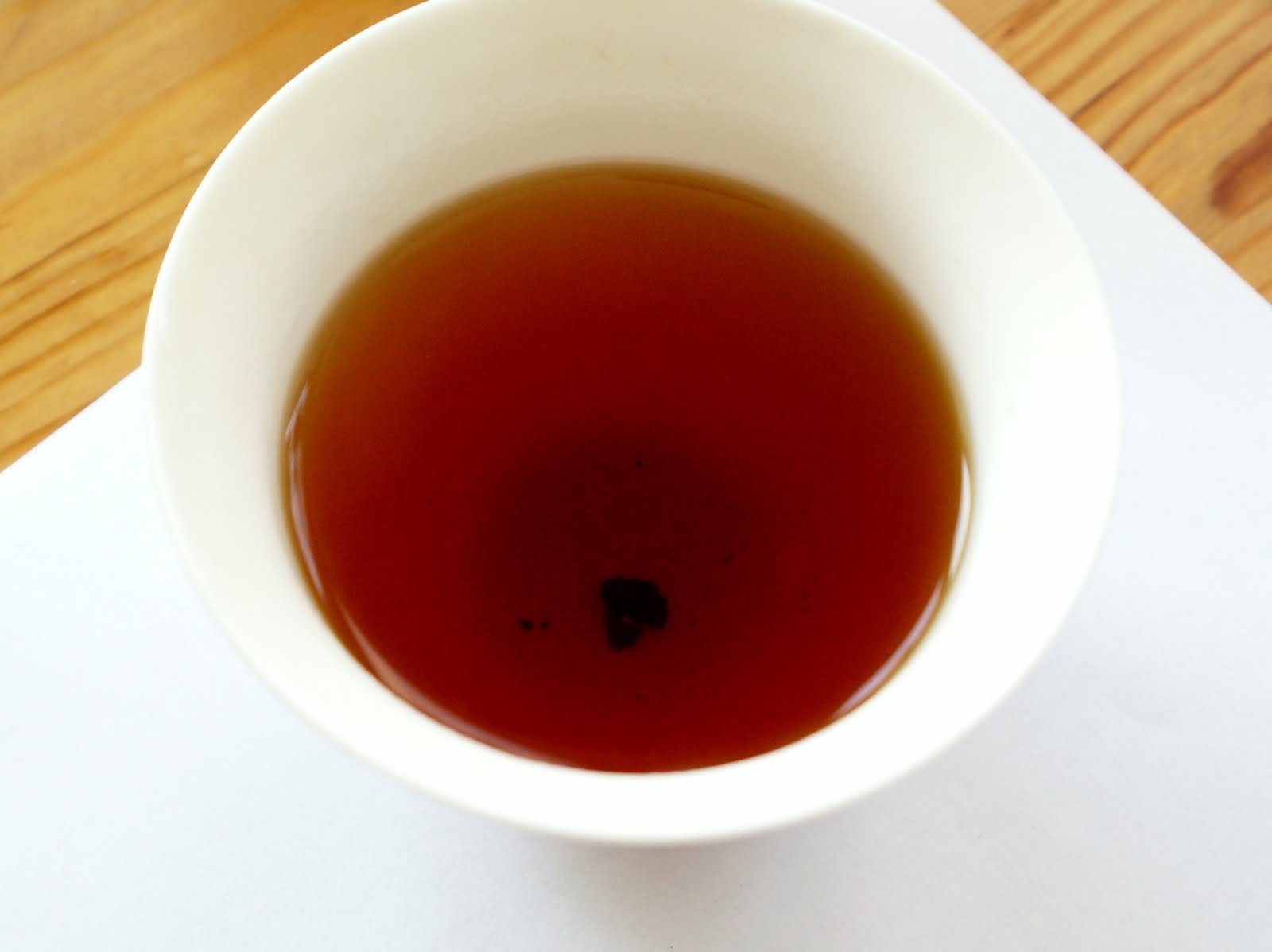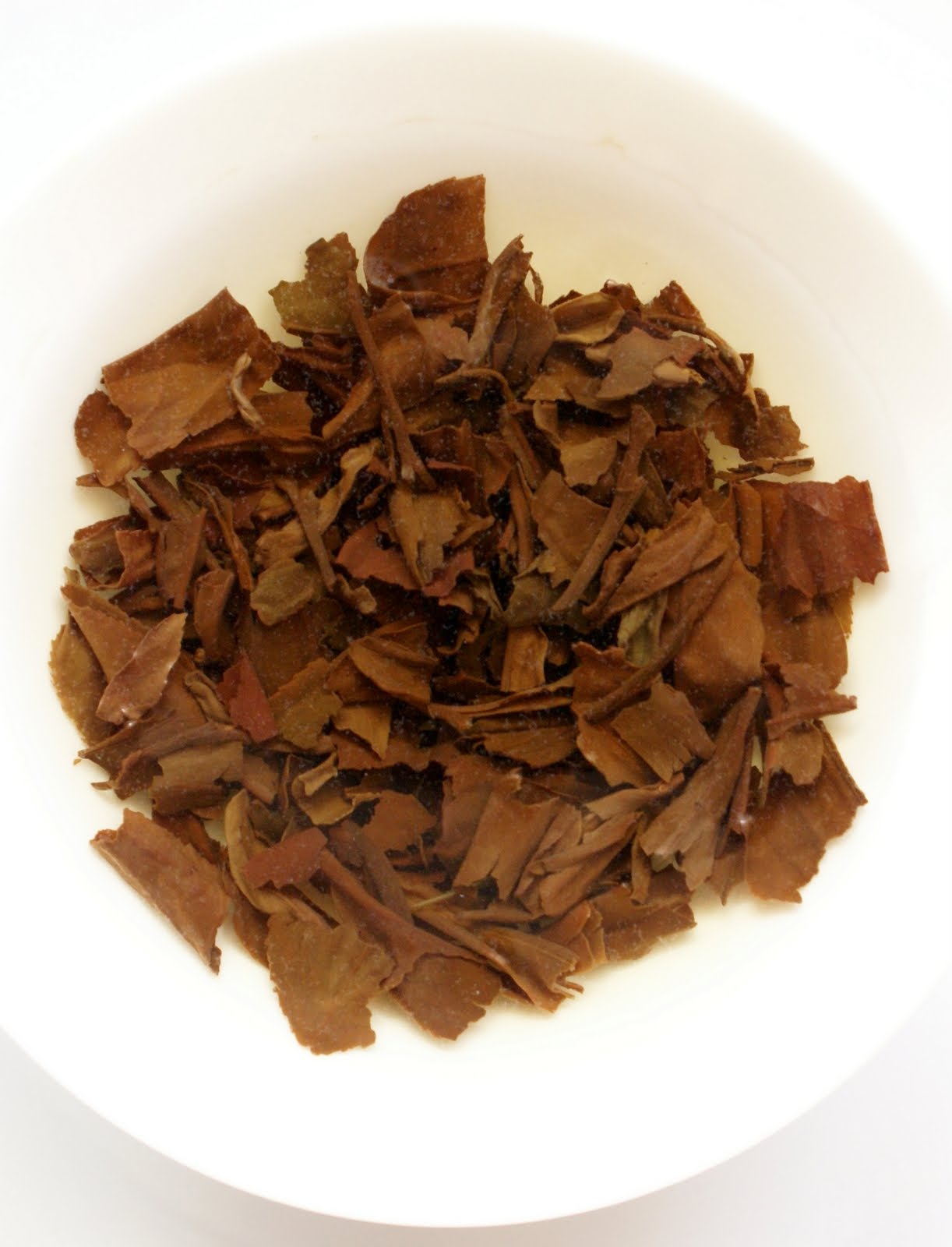2009 Darjeelings (6): Autumn flush
Posted on 8 March 2010
As the first 2010 flush for Darjeeling tea is approaching, it seems fitting to summarise my feelings about 2009’s last, autumn flush. Autumn Darjeeling tea rarely gets any hype, and the tea lover’s attention usually focuses on first or second. I enjoy the former’s finesse and crispness, and the latter’s complexity and full-flavoured summer fruitiness, but I like the autumn teas quite a bit. With their herby, earthy depth and stronger oxidation, they often feel a bit more serious and no-nonsense than the summer flush where the sweet muscatel flavour can get rather repetitive. That’s my feeling, at least.
In any case I’ve enjoyed these eight teas that were sourced from online tea merchant Thunderbolt. Benoy Thapa is doing some great job on the internet including the very comprehensive company website as well as an informative blog and good activity on Facebook. Benoy also provided some exacting tasting notes on all these teas (click on the links to see these, and the excellent photos), so I’ll merely share my personal impressions.
All teas were brewed several times including competition style (2g / 100ml) and large glass pot (250–300 ml with dosage ranging from 2.5 to 5g).
Arya Clonal Exclusive [DJ125]
[photo above] A well presented long twisted leaf, moderate fragmentation by Darjeeling standards. Dark brown leaves, modestly tippy. Aroma of dried herbs with an almost caramelly, milk-chocolatey sweetness. Glass-brewed with 4g, 2m30s: A peculiar tea, on the high end of oxidation, a little earthy, with autumnal, unsweet, not-too-fruity substance. But has a roundness and dimension of whole(ish)-leaf Darj that’s inimitable. Moderate colour and medium body; astringency is virtually non-existent. I actually liked this brewed lighter on less leaf, when it reaches a rounder, more almondy, less earthy expression: a round, soft, very balanced tea. This is very good not great, and although one of the pricier teas from this batch it’s actually fairly honest at $14 / 100g.
Arya FTGFOP1 [DJ107]
[photo above] Standard machine-processed fragmented Darj leaf, not tippy but with a few unoxidised greenish leaf bits. Aroma is perhaps more nutty and chestnutty than usual. Warmed leaf is bready, sweet, less herby. Brewed leaf is rather green; some proportion of twigs. Brewed in glass pot (4g/250ml) this has a medium beige colour, a mild, fleshy, vaguely muscatelish aroma that is simple but good, and a mild balanced flavour with no special merits but pretty good quality for its fragmented leaf. On the finish there is a hint of dryness, atypically for my brewing regime. In fact it’s easy to overbrew, though even when quite bitter and drying on the finish it generates a sweet yun sensation. In a word this has a bit more guts than others autumn flushes, and is very good indeed, especially at $7.
Castleton FTGFOP1 Tippy Clonal [DJ312]
[photo above] A very conservative fragmented leaf grade, negligible tips, generic black tea & brown bag aroma. This is a bit less exciting to look at than other teas on this tasting. Brew has a nice colour, not too dark. A little summer-flushy in character with a ripe red fruitiness of red apples. Just some grip on end, even with a longish brewing. No muscatel: mostly baked apples and nuts. This is wholesome but a little generic and while not a pain at $7 / 100g, lacks a bit of personality to me.
Giddapahar China Delight [DJ58]
[photo above] Similar grade but even less distinctive than the Castleton TPY CL above, smaller and brownier leaf. However in the cup it is a different animal. You can push this quite far, the colour is not very dark and profile is better than expected. A light-bodied, grapey, sweet-fruity muscatelish style, broad and full on the palate (these characteristics are emphasises in a longer brew) but untannic, and even the autumnal herby character is very low. The fruit character and the suggestive muscatel note are really appetizing. Very good tea, and a bargain at $5.
Goomtee Light Clonal Tips [EX26]
This, together with the Margaret’s Hope tea below, is quite different from the other teas in this batch in consisting of very well-handled large, wholish hand-processed leaf vaguely resembling a baimudan white tea, including silvery tips, brownish thin huangpian flakes, relatively few stems. The aroma is very herby and bergamottey, with a sweeter baked bread scent when leaves are warmed. Expired leaves are consistently green and rather thin, plantation-like.
Logically this brews a lightish peachy colour that is only mildly black-tea scented. Flavour is light and fruity (apples, peaches) with no astringency and a touch of roundness, but also citrusy and bone-dry with good length. This is very well-presented leaf-and-bud quality, what Darjeeling should be doing more often to compare more favourably with the best Chinese blacks, but rarely does. Short of greatness but very enjoyable and more than fairly priced at $10 / 100g.
Margaret’s Hope Thunderbolt [DJ565]
[photo above and below] A variation on the above, but an even more impressive whole leaf grade, mixing white tips, some oxidised leaves, and quite a few flat unrolled greenish ‘flakes’. Aroma is faint, bergamottey, slightly reinforced into bready bake with warmth. Brewed competition style: A surprisingly light colour! (Although oxidising into a medium beige quite quickly in the cup). Aroma is faint, a bit oxidative / black tea-like. Clean, appley attack with succulent fruit. This is kept light but a black tea not an oolong, uncomplex and not so very fruity but has some impressive yun sweetness on the finish. Also some lovely spiciness. Really a delicious expression of Darjeeling. There’s another pleasant if less full and precise brewing behind.
This is even more outstanding in a large pot (4g / 250+ml), with lovely transparency of flavour and again that Darjeeling typicity without extraction and astringency. This is one tea that I would like to try with a high dosage in clay pot, like a Wuyi oolong. $16 / 100g: expensive by regional standards but more than fair for the quality. ($16 would buy you a very average Wuyi oolong).
Risheehat SFTGFOP1 Wiry [DJ562]
[photo above] True to their ‘Wiry’ name, leaves have an elongated straight aspect; small and fragmented. Quite some twigs, no tips. Not an exhilarating grade. Brewed leaf fragments are very small, uniformly brown, reminiscent of some gongfu grade Qimens or black Yunnans. Medium+ beige, a lighter colour than expected. A balanced cup with a nutty, typically autumnal character and just minor grip on end. But uncomplex and ultimately a little simplistic. Better balance in a larger pot, with the tannins kept at bay. This surely on the more oxidised end of the spectrum, with a somewhat malty, chewy character vaguely reminiscent of an Assam, but brewed light this can be kept at bay, though at the expense of complexity. This is good tea, but not quite my style. $7.
Sungma Turzum Clonal Wonder [DJ22]
[photo above and below] Small leaves, minor tips, intense aroma. A reasonably good grade, but not that makes me ‘wonder’. Brewed light with 90s, a moderate brown-reddish colour and again a rather intense aroma of dried fruits and apple pie. The oxidation is very balanced and the dry, herby aromas of autumn flush are underpinned by an almost second-flushy fruit exuberance: apples, raisins, plums. This is definitely good, and showing that Darjeeling needn’t be a whole-leaf extravagance like the Margaret’s Hope above to deliver superior character. The only criticism is that this Clonal Wonder is a bit uncomplex. Especially when left too long in the cup or the decanting jug, when it loses its fruity breadth and becomes quite tannic, though not astringent. Through several brewing attempts I came to the conclusion that large pot and short steeps work best. If brewed stronger, this remains rather simple and becomes overtannic for my tastes, with muted fruit and a rather ordinary profile. Good value at $8.
Disclosure
Source of teas: own purchase.


